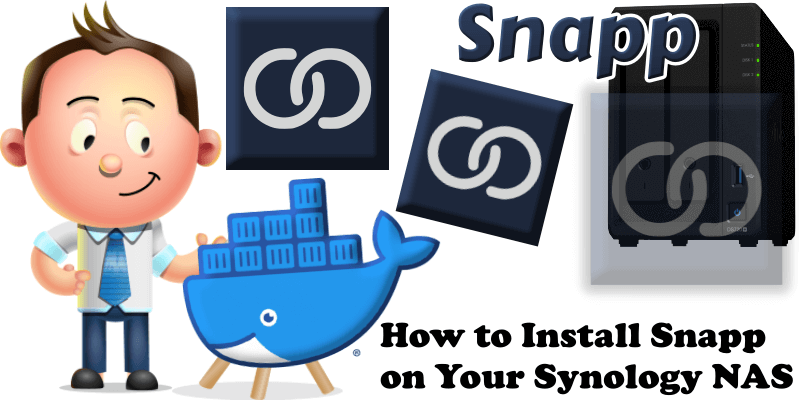
Discover the power of Snapp, your self-hostable URL shortening service. Effortlessly shorten links and, with Snapp’s self-hosting capability, you have complete control. Create concise, shareable links on your terms with Snapp’s user-friendly platform. In this step by step guide I will show you how to install Snapp on your Synology NAS with Docker & Portainer.
STEP 1
Please Support My work by Making a Donation.
STEP 2
Install Portainer using my step by step guide. If you already have Portainer installed on your Synology NAS, skip this STEP. Attention: Make sure you have installed the latest Portainer version.
STEP 3
Make sure you have a synology.me Wildcard Certificate. Follow my guide to get a Wildcard Certificate. If you already have a synology.me Wildcard certificate, skip this STEP.
STEP 4
Go to File Station and open the docker folder. Inside the docker folder, create one new folder and name it snappdb. Follow the instructions in the image below.
Note: Be careful to enter only lowercase, not uppercase letters.
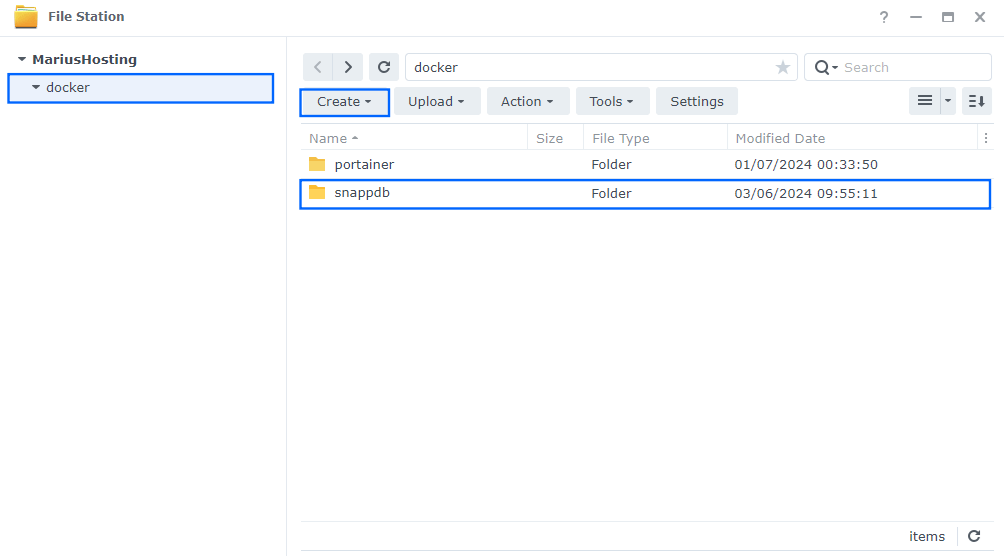
STEP 5
Go to Control Panel / Login Portal / Advanced Tab / click Reverse Proxy. Follow the instructions in the image below.
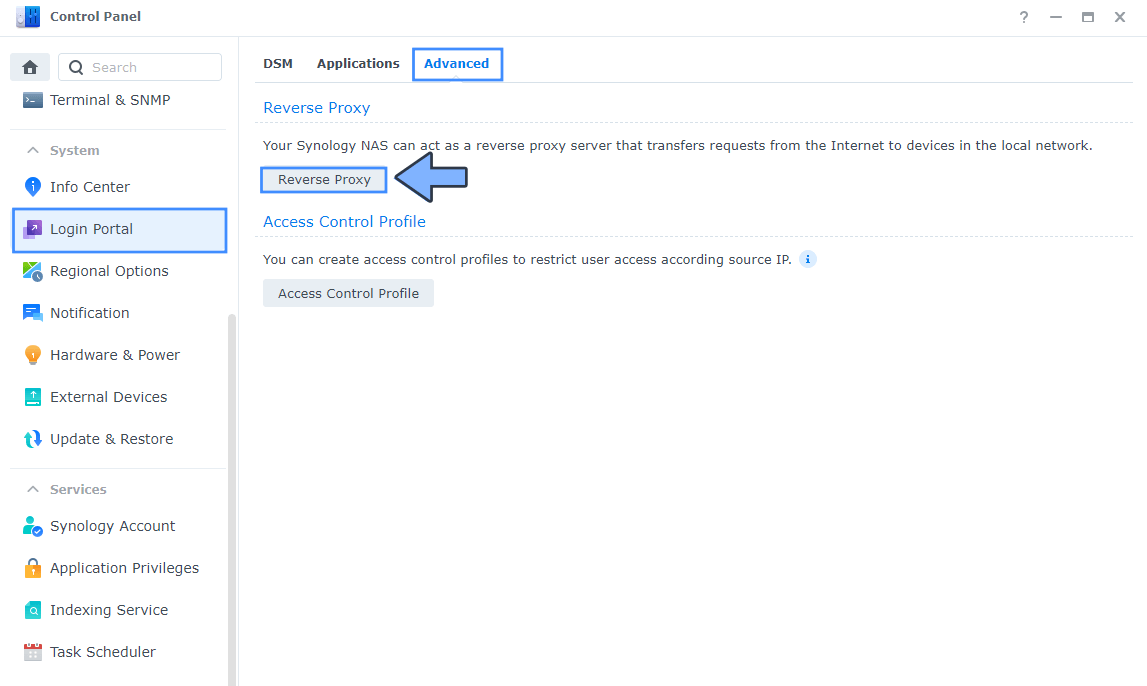
STEP 6
Now click the “Create” button. Follow the instructions in the image below.
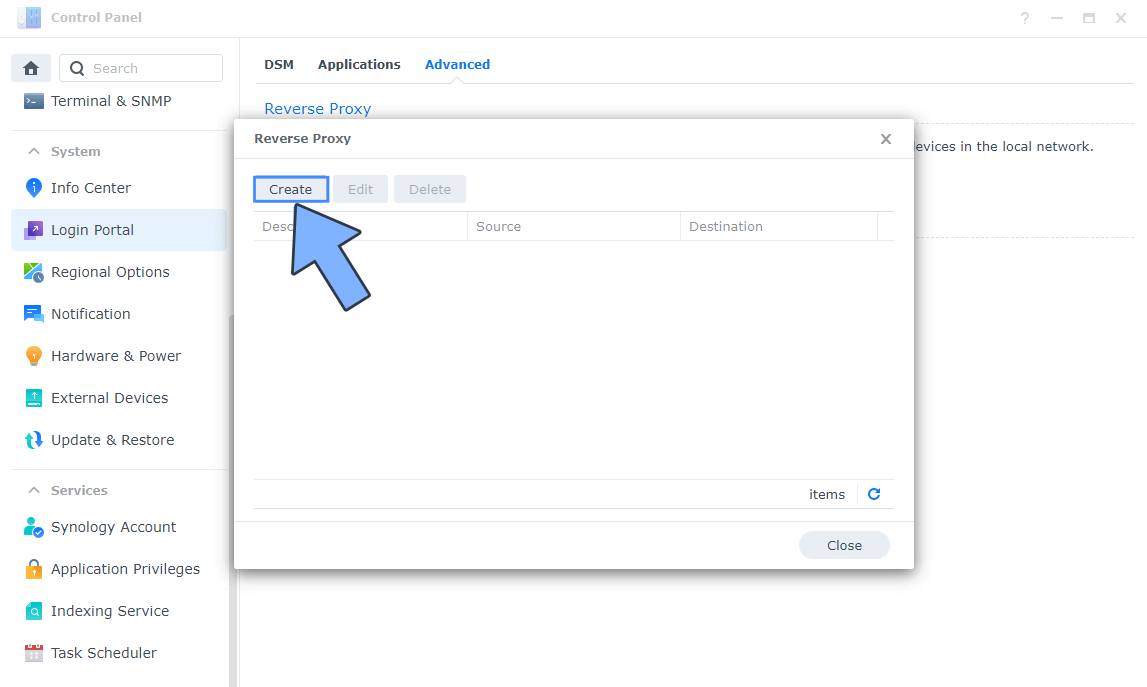
STEP 7
After you click the Create button, the window below will open. Follow the instructions in the image below.
On the General area, set the Reverse Proxy Name description: type in Snapp. After that, add the following instructions:
Source:
Protocol: HTTPS
Hostname: snapp.yourname.synology.me
Port: 443
Check Enable HSTS
Destination:
Protocol: HTTP
Hostname: localhost
Port: 6421
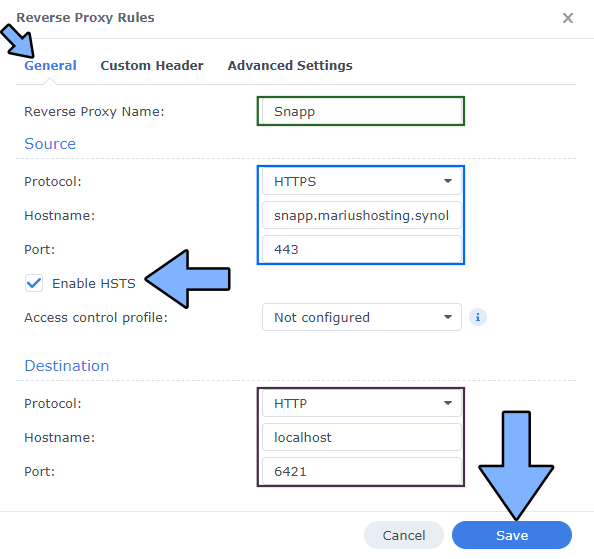
STEP 8
On the Reverse Proxy Rules, click the Custom Header tab. Click Create and then, from the drop-down menu, click WebSocket. After you click on WebSocket, two Header Names and two Values will be automatically added. Click Save. Follow the instructions in the image below.

STEP 9
Go to Control Panel / Network / Connectivity tab/ Check Enable HTTP/2 then click Apply. Follow the instructions in the image below.
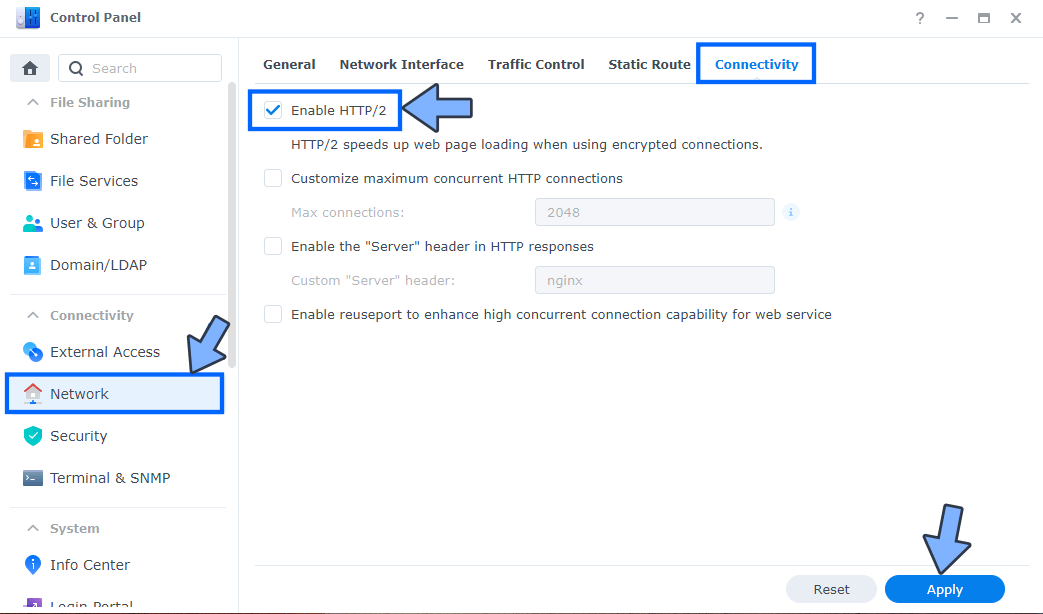
STEP 10
Go to Control Panel / Security / Advanced tab/ Check Enable HTTP Compression then click Apply. Follow the instructions in the image below.
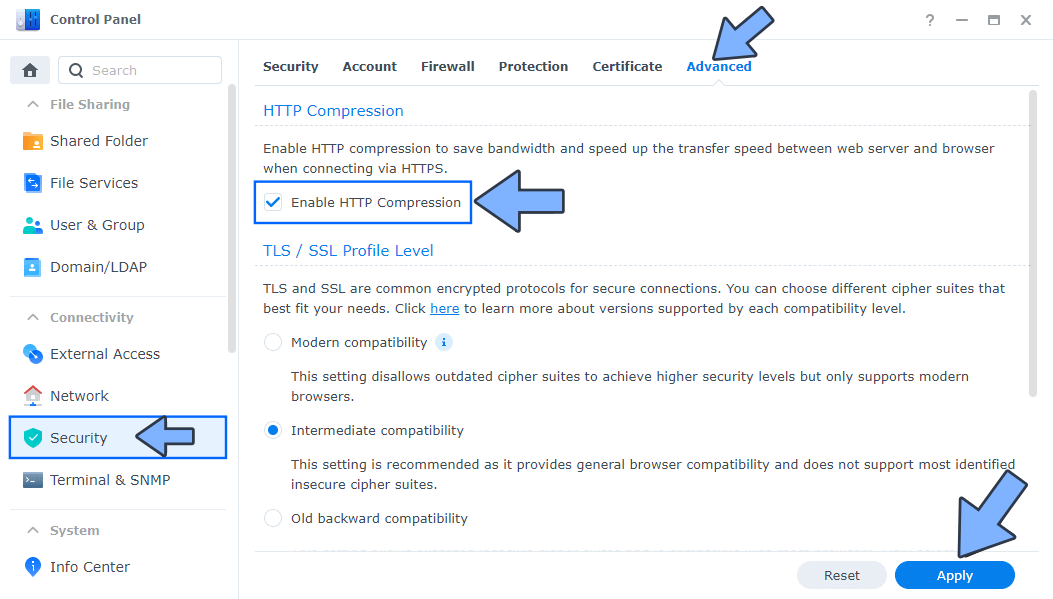
STEP 11
Log into Portainer using your username and password. On the left sidebar in Portainer, click on Home then Live connect. Follow the instructions in the image below.

On the left sidebar in Portainer, click on Stacks then + Add stack. Follow the instructions in the image below.

STEP 12
In the Name field type in snapp. Follow the instructions in the image below.
services:
db:
image: postgres:16
container_name: Snapp-DB
hostname: snapp-db
mem_limit: 1g
cpu_shares: 1024
security_opt:
- no-new-privileges:true
healthcheck:
test: ["CMD", "pg_isready", "-q", "-d", "snapp", "-U", "snappuser"]
timeout: 45s
interval: 10s
retries: 10
volumes:
- /volume1/docker/snappdb:/var/lib/postgresql/data:rw
environment:
POSTGRES_DB: snappdb
POSTGRES_USER: snappuser
POSTGRES_PASSWORD: snapppass
restart: on-failure:5
snapp:
container_name: Snapp
image: uraniadev/snapp:latest
mem_limit: 4g
cpu_shares: 1024
security_opt:
- no-new-privileges:false
restart: on-failure:5
ports:
- 6421:3000
depends_on:
db:
condition: service_healthy
environment:
ORIGIN: https://snapp.yourname.synology.me
ADMIN_USERNAME: marius
ADMIN_PASSWORD: mariushosting
NODE_ENV: production
TIMEZONE: Europe/Bucharest
DATABASE_PROVIDER: postgres
DATABASE_POSTGRES_URL: postgres://snappuser:snapppass@db:5432/snappdb
TOKEN_SECRET: base64:fMDTXuqt6i+RJRwQPXV/8NKquvyLt54PhFfrCTaTqEo=
Note: Before you paste the code above in the Web editor area below, change the value for ORIGIN and type in your own synology.me DDNS with https:// at the beginning that you have previously created at STEP 6.
Note: Before you paste the code above in the Web editor area below, change the value for ADMIN_USERNAME and type in your own username. marius is an example for a username. You will need this username later at STEP 17.
Note: Before you paste the code above in the Web editor area below, change the value for ADMIN_PASSWORD and type in your own username. mariushosting is an example for a password. You will need this password later at STEP 17.
Note: Before you paste the code above in the Web editor area below, change the value for TIMEZONE. (Select your current Time Zone from this list.)
Note: Before you paste the code above in the Web editor area below, change the value for TOKEN_SECRET. (Generate your own free TOKEN SECRET)
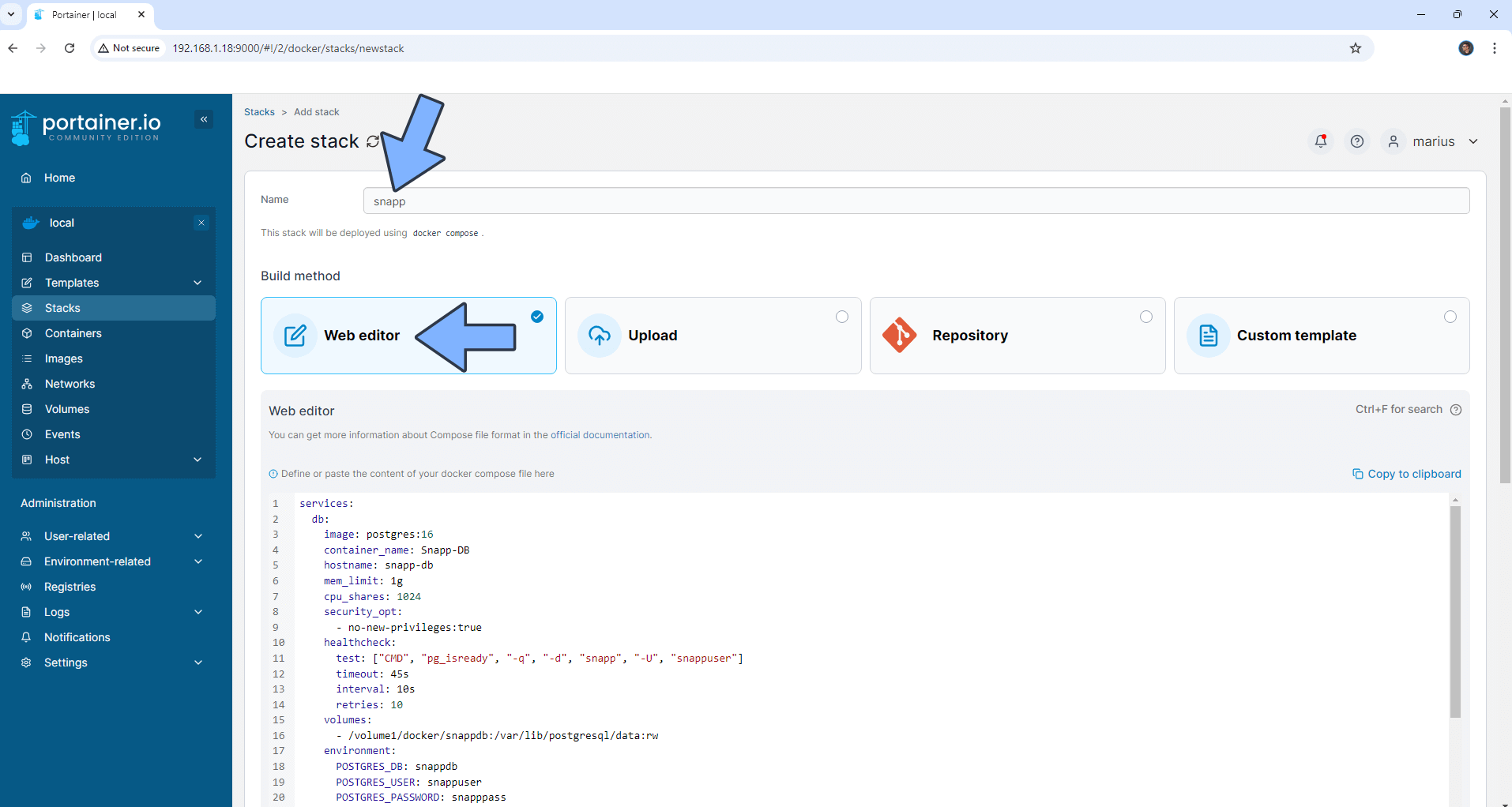
STEP 13
Scroll down on the page until you see a button named Deploy the stack. Click on it. Follow the instructions in the image below. The installation process can take up to a few minutes. It will depend on your Internet speed connection.
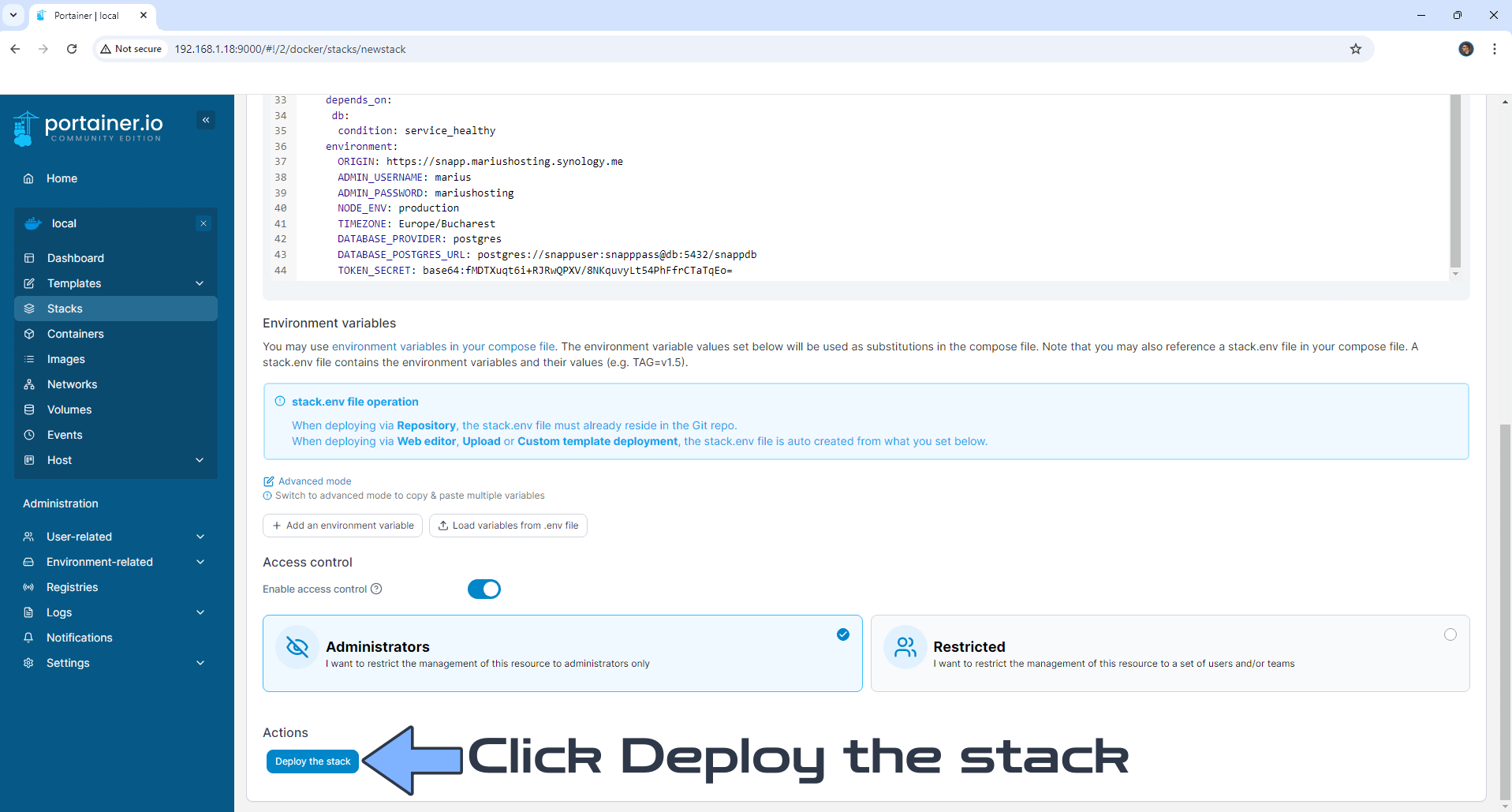
STEP 14
If everything goes right, you will see the following message at the top right of your screen: “Success Stack successfully deployed“.

STEP 15
🟢Please Support My work by Making a Donation. Almost 99,9% of the people that install something using my guides forget to support my work, or just ignore STEP 1. I’ve been very honest about this aspect of my work since the beginning: I don’t run any ADS, I don’t require subscriptions, paid or otherwise, I don’t collect IPs, emails, and I don’t have any referral links from Amazon or other merchants. I also don’t have any POP-UPs or COOKIES. I have repeatedly been told over the years how much I have contributed to the community. It’s something I love doing and have been honest about my passion since the beginning. But I also Need The Community to Support me Back to be able to continue doing this work.
STEP 16
Now open your browser and type in your HTTPS/SSL certificate like this https://snapp.yourname.synology.me that you have previously created at STEP 6. In my case it’s https://snapp.mariushosting.synology.me If everything goes right, you will see the Snapp start page. On the left sidebar click the AUTH icon. Follow the instructions in the image below.
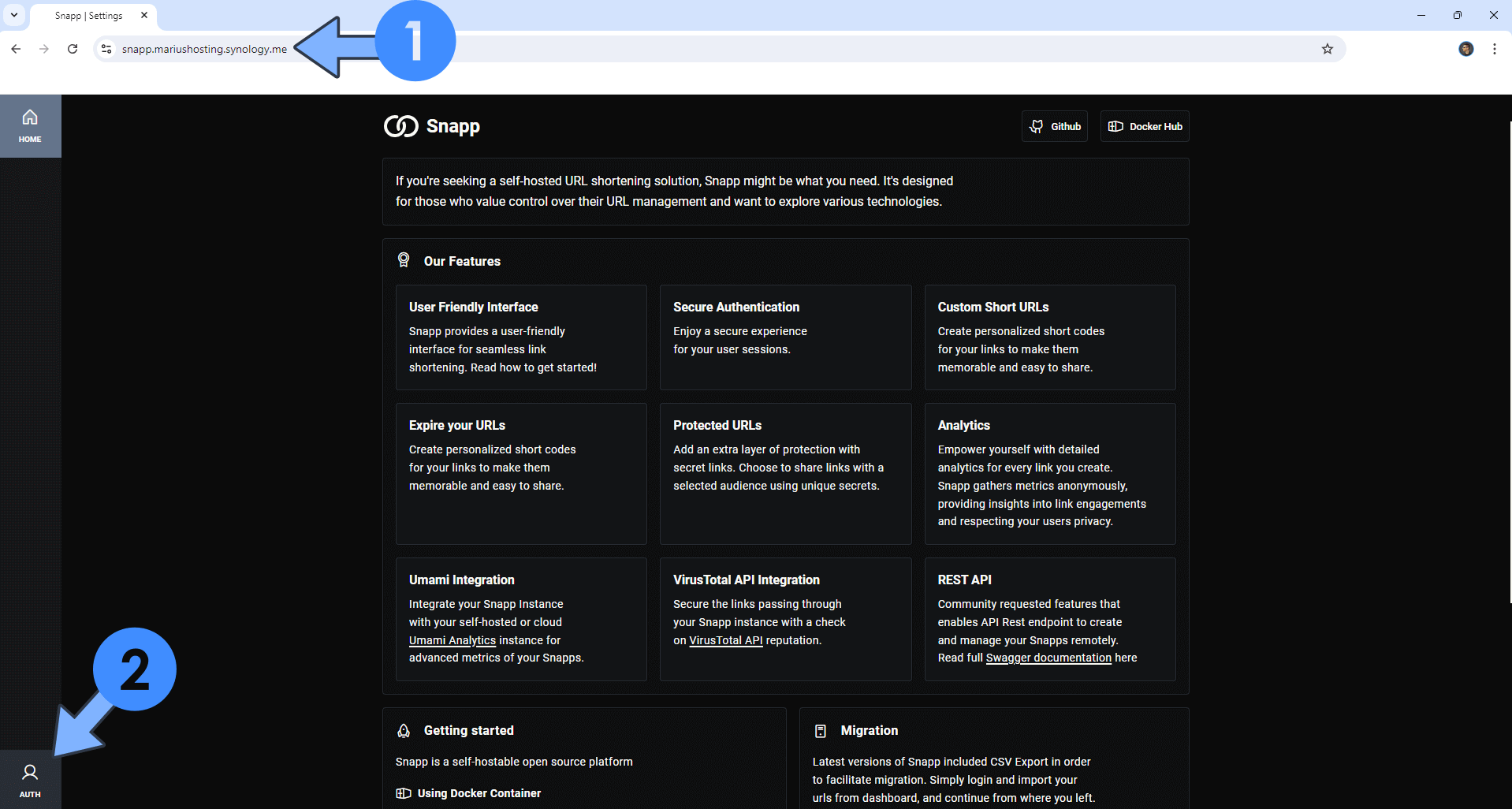
STEP 17
Type in your own username and password that you have previously created at STEP 12, then click Sign in. Follow the instructions in the image below.
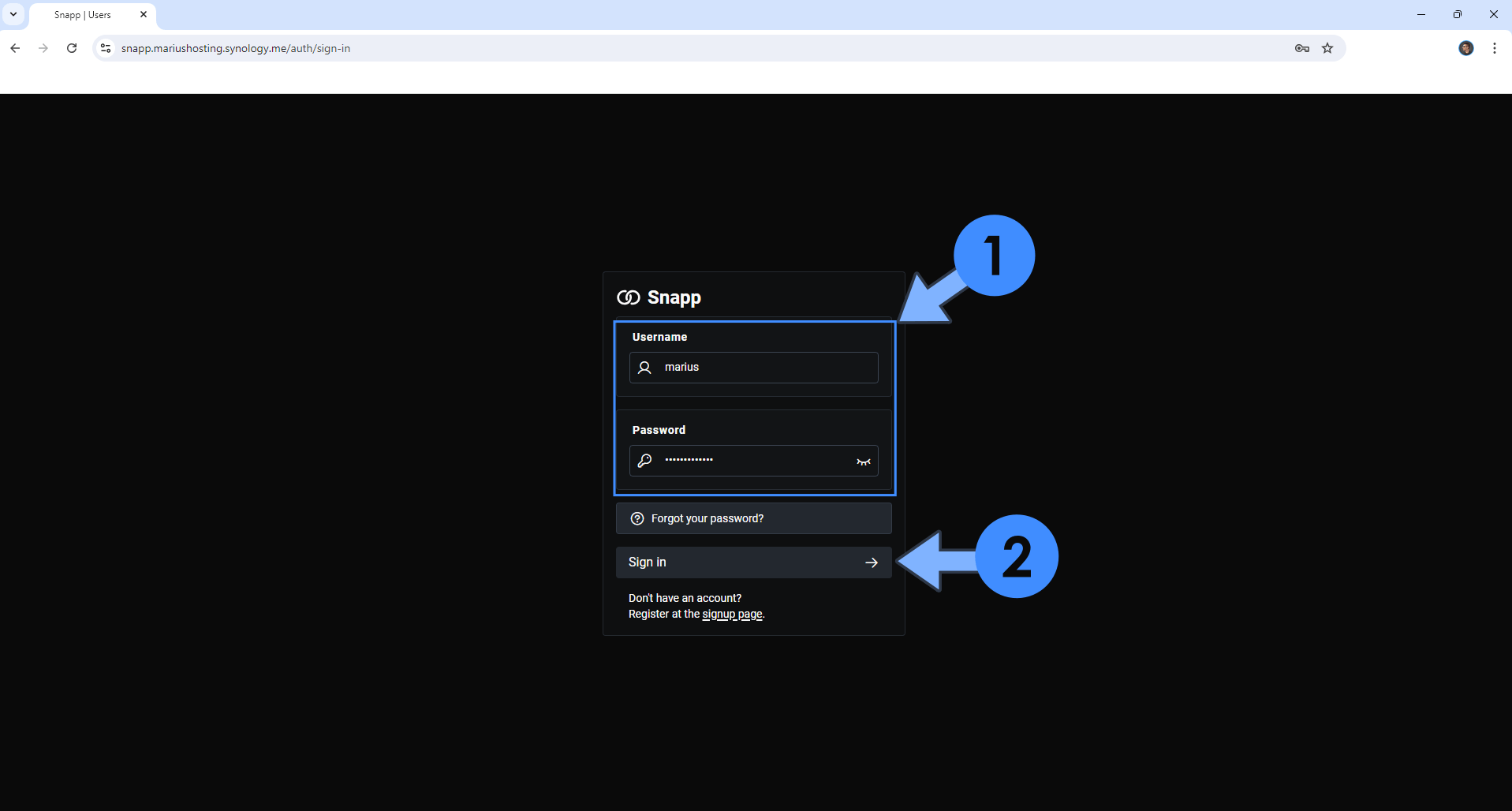
STEP 18
On the left sidebar, click Dashboard then +Shorten a URL tab. Type in your Original long URL that you want to shorten, then a custom short slug. Click Save. Follow the instructions in the image below.
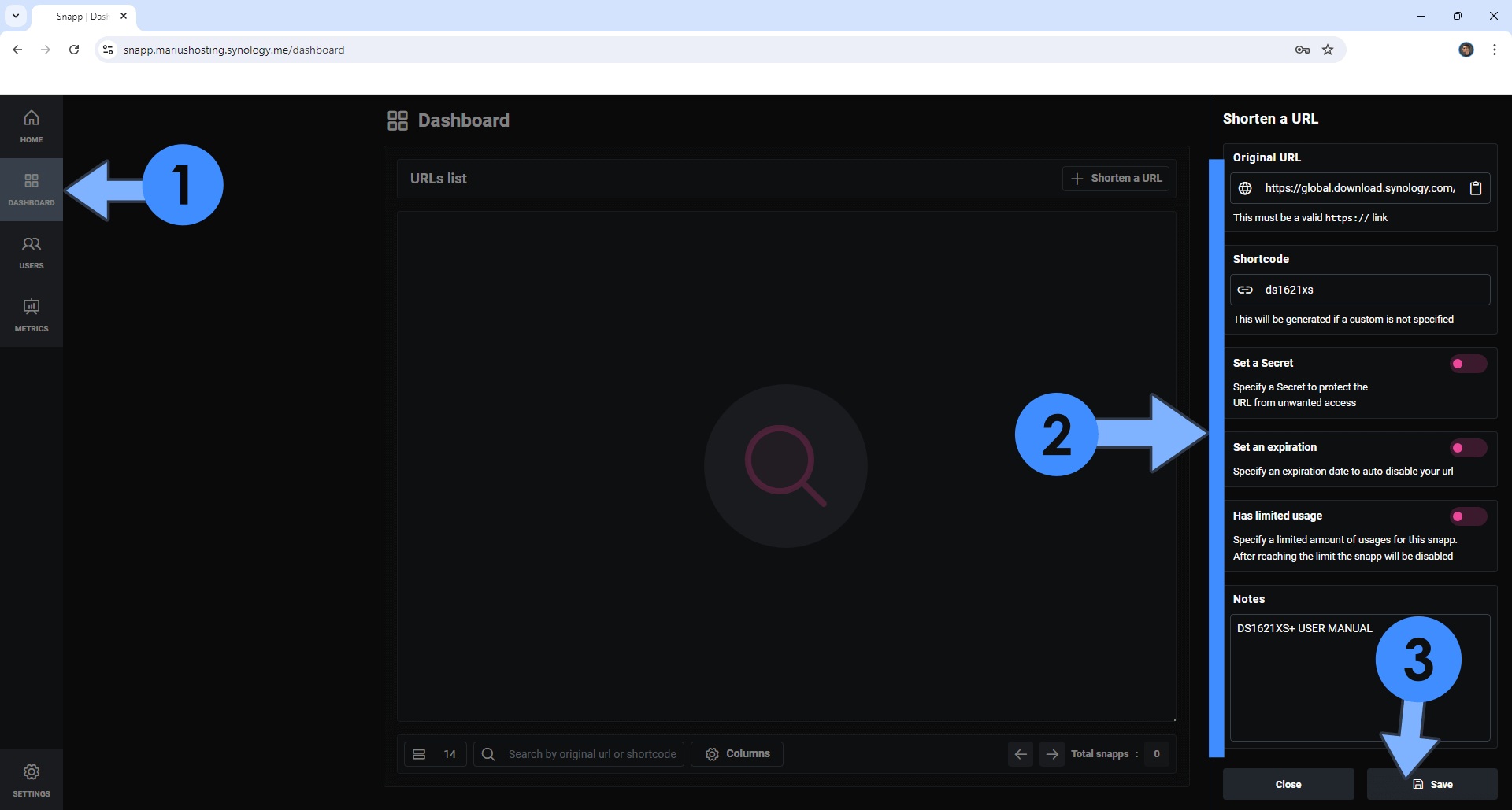
STEP 19
Click on your slug to see the details. Follow the instructions in the image below.
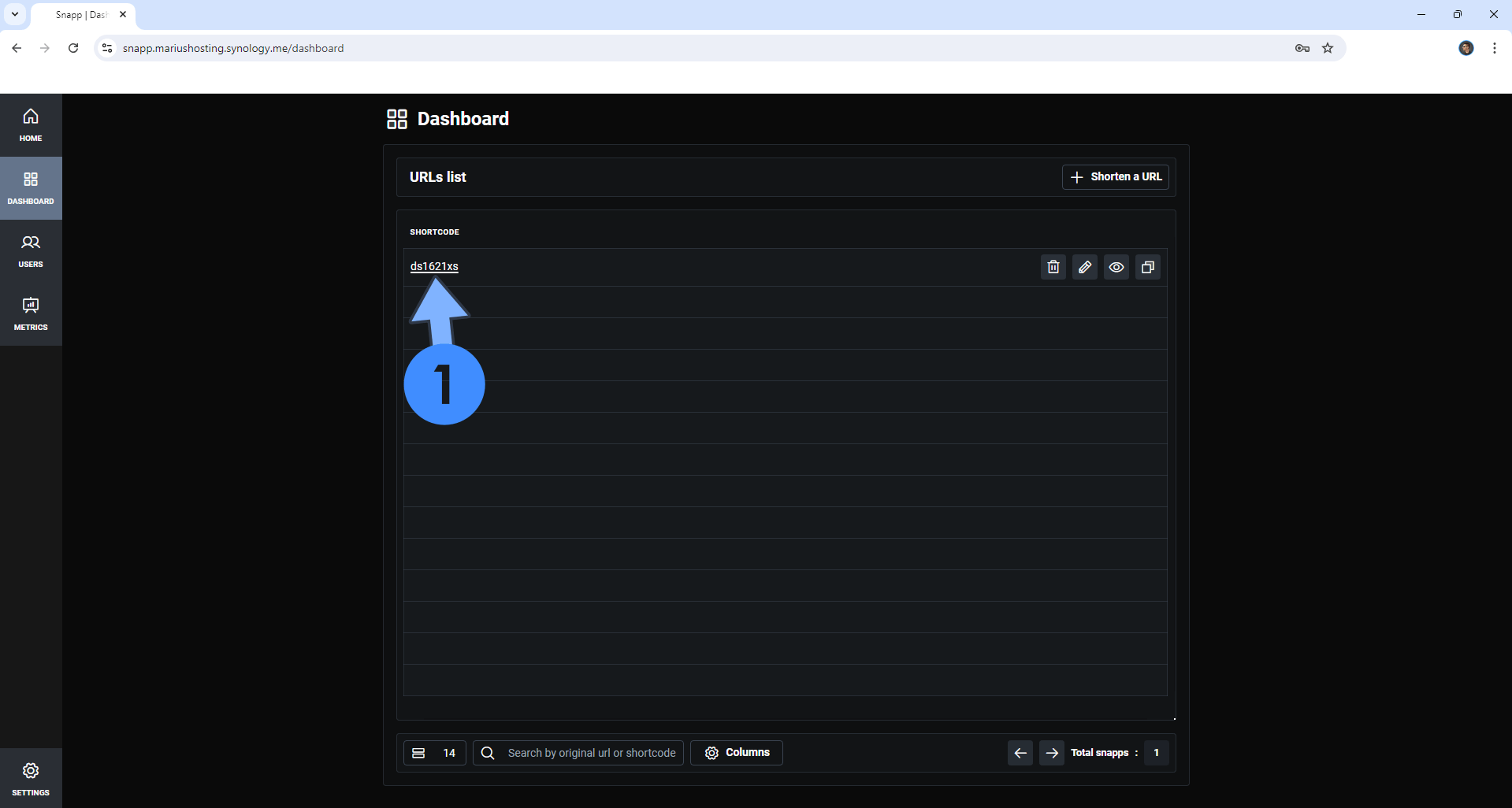
STEP 20
Your shortened link details at a glance!
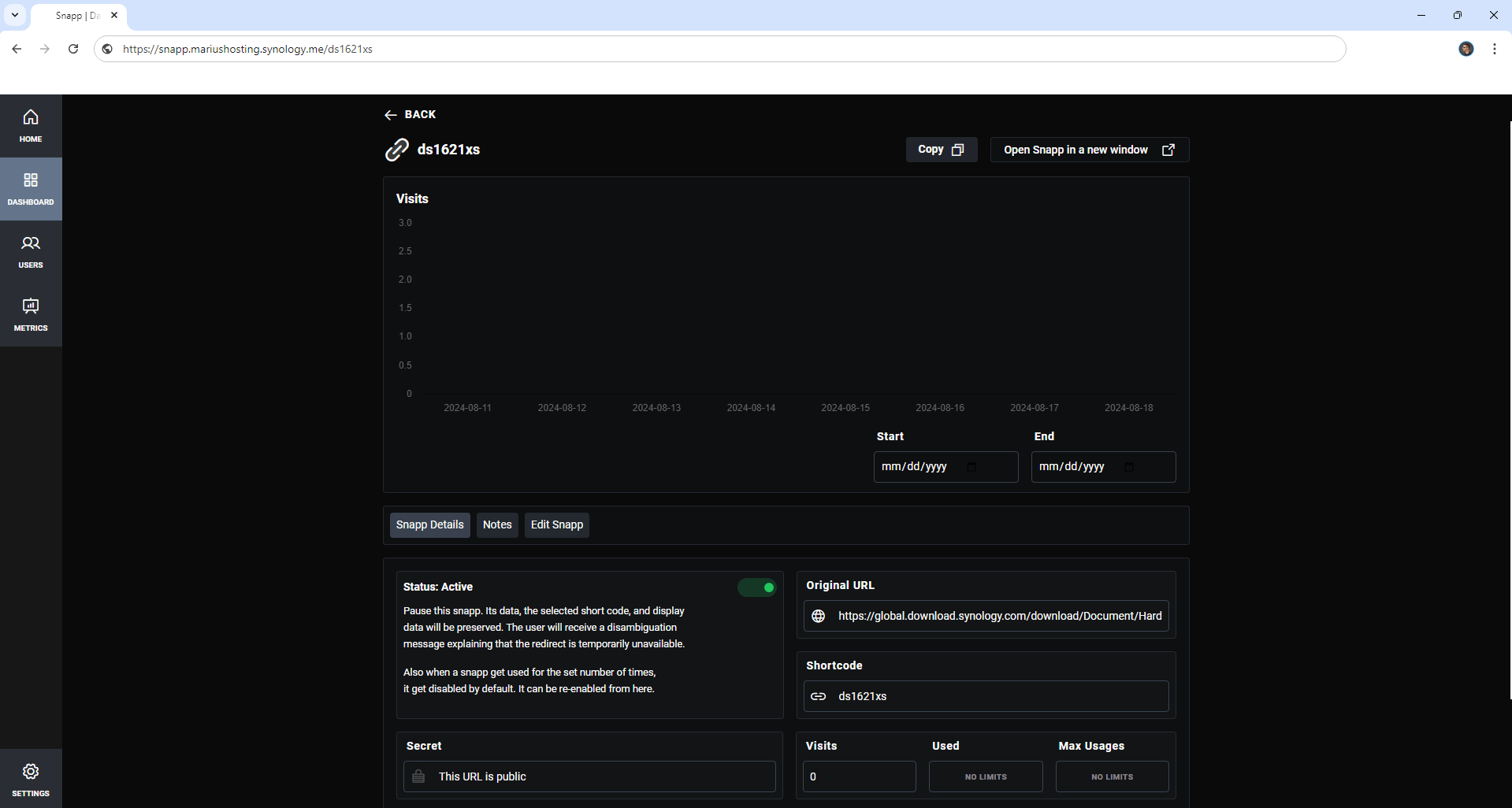
STEP 21
On the left sidebar, click Settings, then set up your SMTP Server. Follow my step by step guide on how to activate SMTP for your Gmail account. This step is mandatory. Note: If you don’t want to use the easiest way for SMTP with Google and you already have SMTP details from your own Mail Server, you can just skip this STEP and use your personalized email SMTP details instead.
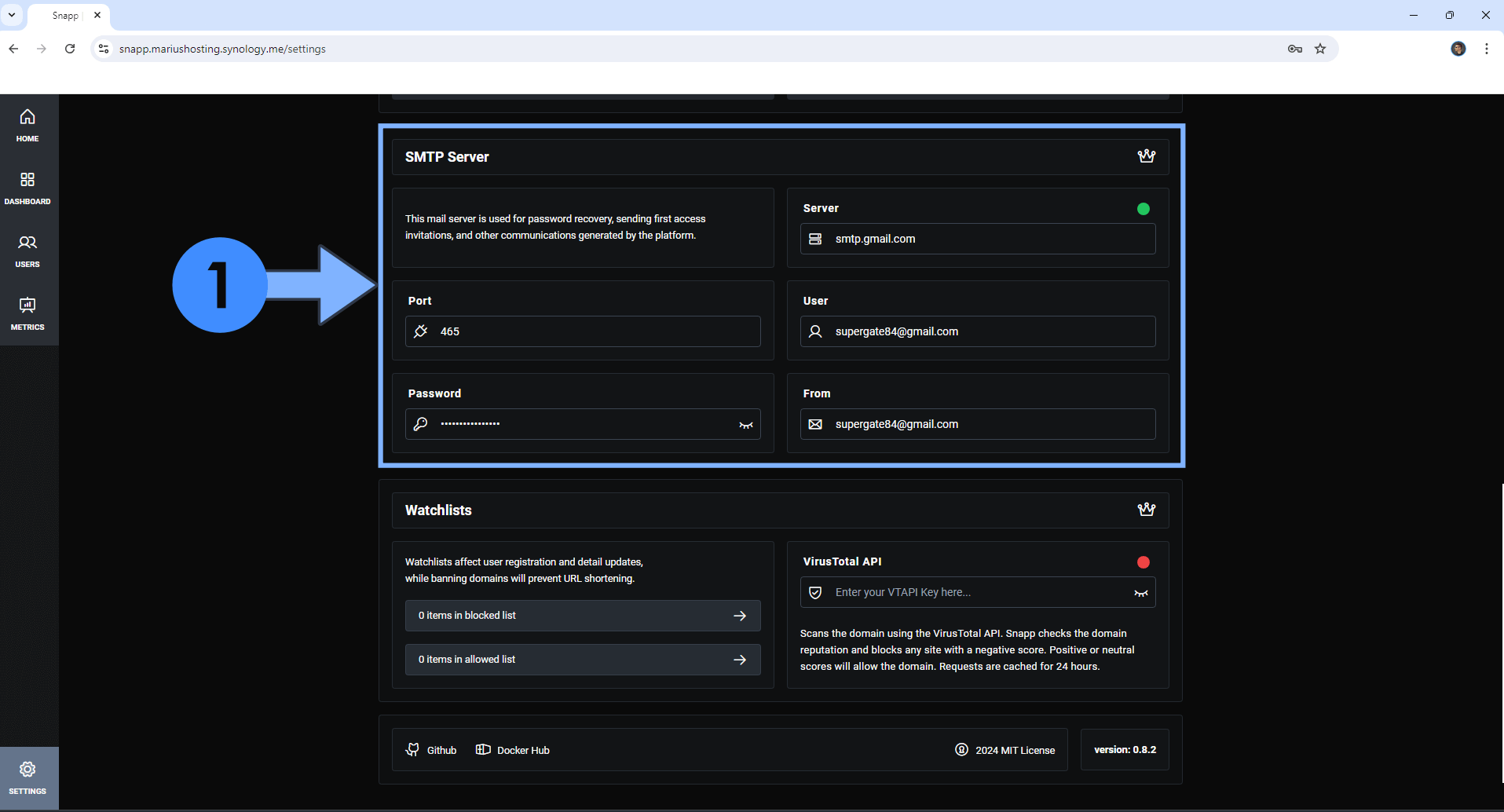
STEP 22
You can now invite new Users to become part of your Snapp team. Follow the instructions in the image below.
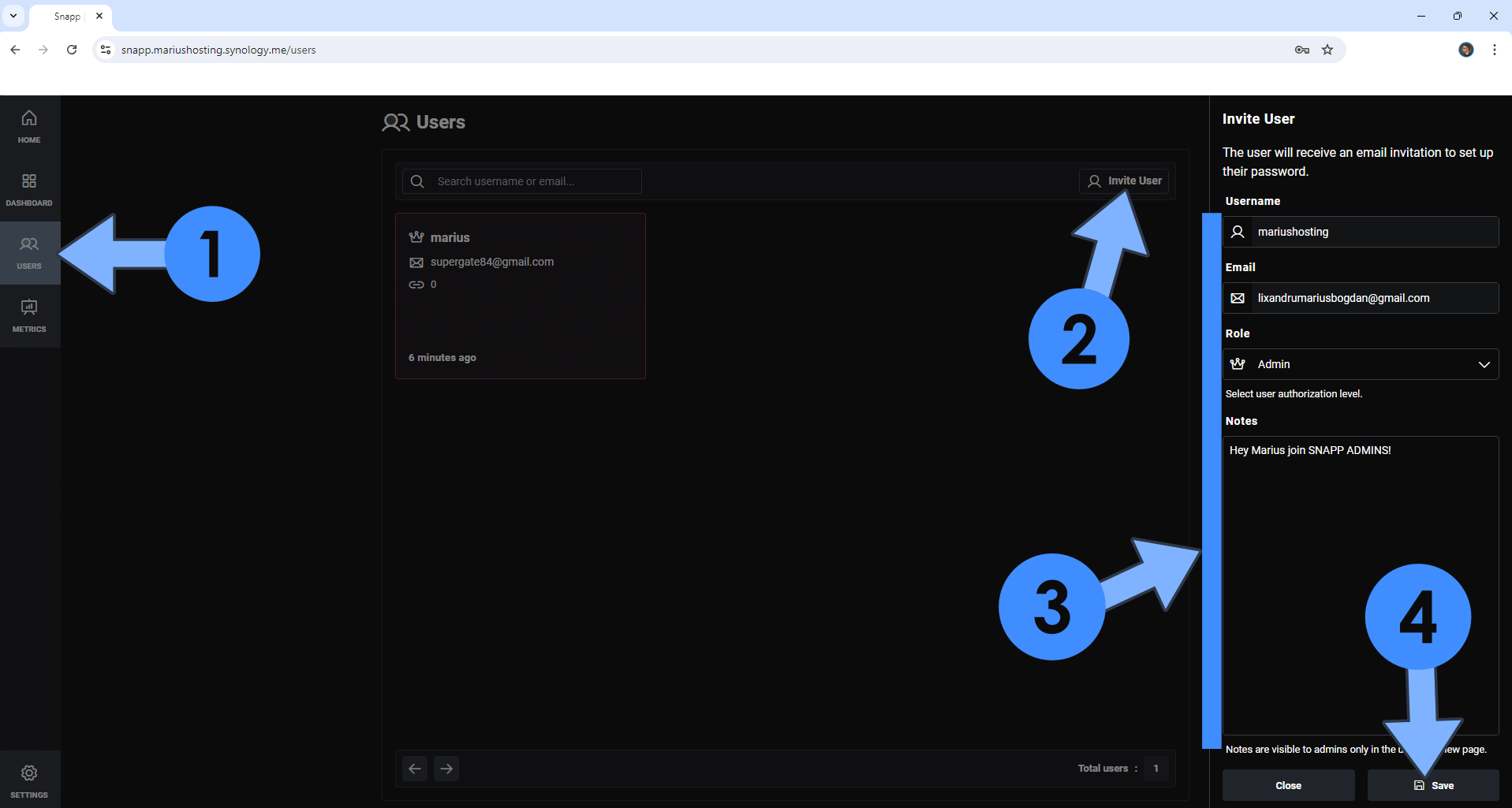
STEP 23
Once you click Save at STEP 22, the invited user will receive an email to Set up an account on your Snapp instance.
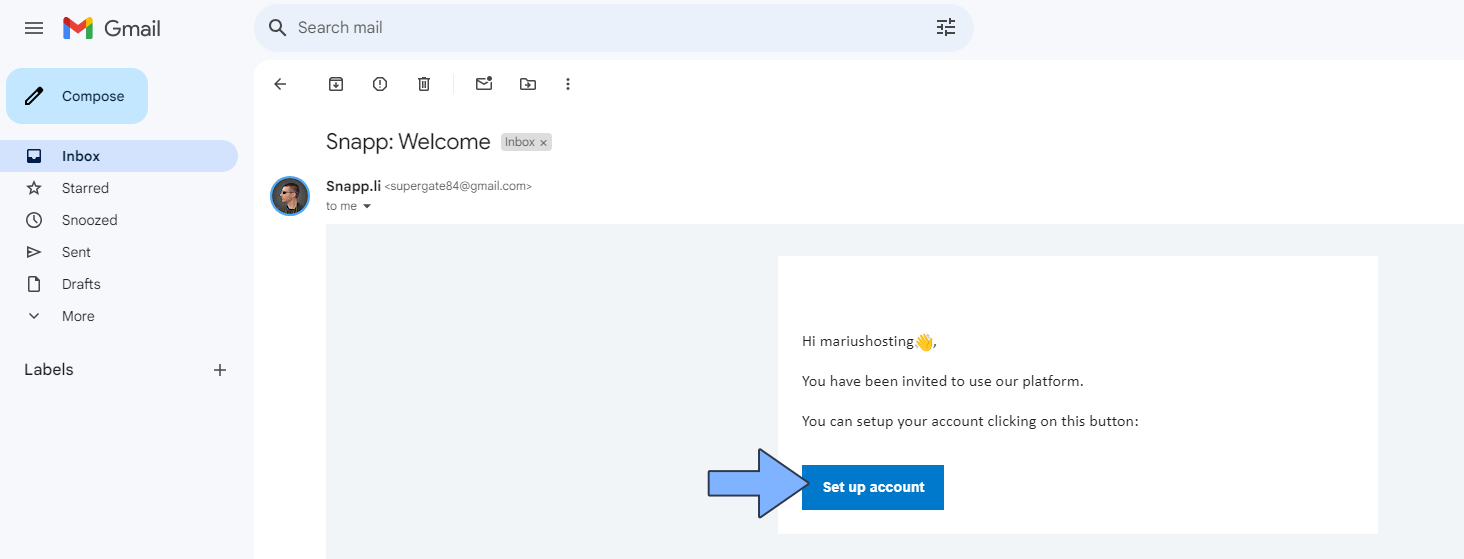
Enjoy Snapp!
If you encounter issues by using this container, make sure to check out the Common Docker issues article.
Note: Can I run Docker on my Synology NAS? See the supported models.
Note: How to Back Up Docker Containers on your Synology NAS.
Note: Find out how to update the Snapp container with the latest image.
Note: How to Free Disk Space on Your NAS if You Run Docker.
Note: How to Schedule Start & Stop For Docker Containers.
Note: How to Activate Email Notifications.
Note: How to Add Access Control Profile on Your NAS.
Note: How to Change Docker Containers Restart Policy.
Note: How to Use Docker Containers With VPN.
Note: Convert Docker Run Into Docker Compose.
Note: How to Clean Docker.
Note: How to Clean Docker Automatically.
Note: Best Practices When Using Docker and DDNS.
Note: Some Docker Containers Need WebSocket.
Note: Find out the Best NAS Models For Docker.
Note: Activate Gmail SMTP For Docker Containers.
This post was updated on Tuesday / August 26th, 2025 at 11:10 PM
